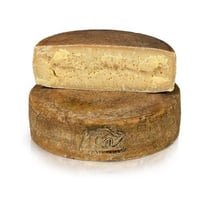The transhumance, a UNESCO cultural heritage, even if intangible. The traditional practice of seasonal livestock migration was unanimously inscribed last December in the Representative List of the Intangible Cultural Heritage of UNESCO.
Transhumant shepherds possess a deep understanding of the environment, of the ecological balance between man and nature, and of climate change: in fact, it is one of the most sustainable and efficient breeding methods. Today, transhumance is mainly practiced between Molise, Abruzzo, and Puglia, Lazio, Campania, and in the North between Italy and Austria in South Tyrol, Lombardy, Aosta Valley, Sardinia, and Veneto. Discover with us what transhumance is, its history, how it works, and what differences exist today compared to the past.
Transhumance is an ancient pastoral practice that consists of the seasonal migration of livestock in the Mediterranean and the Alps. A tradition that dates back to prehistoric times and developed in Italy also through the grassy paths of the “tratturi” which testify, now as in the past, to a balanced relationship between man and nature and a sustainable use of natural resources.
To describe the phases in which the movements that constitute transhumance take place, the terms “monticazione” and “demonticazione” are used.
Monticazione refers to the initial phase of transhumance, which occurs in the spring when shepherds move from lowland areas to high mountain pastures and the alpeggio begins.
Demonticazione defines the subsequent transfer, which in the autumn returns the animals and shepherds from the high pastures to the lowland pastures in the descent phase following the summer alpeggio.
This custom heavily influenced the life of the shepherd in past centuries, who could not count on the presence of typical structures of modern farming, such as stables and systems for feeding, milking, and refrigerating milk.
In Italy, this ancient practice mainly originated in Abruzzo, with branches towards both Gargano and the Murge, passing through Molise. It involved transporting (“transumare”) animals from the Abruzzo and Molise mountains to the rich pastures of Tavoliere and Gargano.
After 1447, it became the main economic source for many Abruzzese towns and remained so until the late 1800s when the Aragons wanted to develop the wool industry. However, the expected results from Alfonso of Aragon were not achieved, and the wool industry of the Kingdom of Naples could not compete with that of Spain, Flanders, and England.
Transhumance, as we have already explained, is an ancient pastoral practice that consists of the periodic movement of livestock, especially, but not exclusively, sheep between two grazing areas usually located one in the lowlands and the other in the mountains in order to ensure good grazing for the livestock throughout the year. Thus, in summer, when the grass in the lowlands is burned by the sun, the livestock is moved to a mountain pasture, and conversely in autumn, when the mountain pastures begin to be covered in snow, the livestock is taken back to the lowlands where the meadows, after the summer's drought, green again.
With the advent of modern animal husbandry and intensive farming directly in farms, today the activity of transhumance has greatly decreased. Nowadays, it is practiced in limited areas of Italy, especially in some alpine and pre-alpine locations of Aosta Valley, Piedmont, Liguria, Italian Switzerland, the Asiago Plateau, Lessinia, Trentino, South Tyrol, and Carnia, as well as in other Apennine areas of Molise, Abruzzo, Puglia, and Lazio, as well as in Sardinia by the shepherds of Villagrande and Arzana. In Sicily, it is still practiced in the Madonie area, in Geraci Siculo.
Transhumance is often the subject of numerous events: transhumance festivals, gatherings, and vigils on the occasion of a flock's departure, arrival at the alpeggio. These festivals effectively contribute to the promotion of cities and territories and have important economic impacts. If you happen to come across one of these festivals, make sure not to miss it. The taste of being able to rediscover the traditions and customs of the past is priceless.
Francesco Scuderi
 S&M
S&M
We recommend that you enjoy
✔ You have added the product to your cart!
